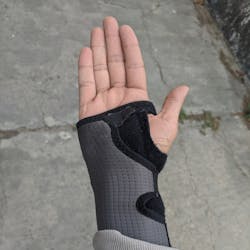Among patients with rheumatoid arthritis (RA), higher Clinical Disease Activity Index (CDAI) score may be more strongly associated with cardiovascular disease (CVD) risk when measured earlier during follow-up compared with later, according to a study published in ACR Open Rheumatology.
Using the CorEvitas prevalent RA registry, the study authors collected the data of 44,816 patients with RA to evaluate potential time-varying associations between disease CDAI and risk of major adverse CV events (MACEs).
Most (77%) of patients included were female, and the mean age was 58 years. The crude CV event rate was 5.3 per 1000 person-years with a median follow-up of 3.4 years.
“We used marginal structural models to estimate the hazard ratio (HR), comparing each CDAI score category with remission, allowing for differential association over time,” the authors noted. “We predicted MACE-free survival under several CDAI score scenarios.”
The authors classified CDAI score by the 4 ordinal categories: remission (≤ 2.8), low disease activity (2.9-10.0), moderate disease activity (10.1-22.0), and high disease activity (22.1-76). The mean CDAI score at baseline was 14.
Within a median 5-year follow-up after RA onset, data showed the strongest association between high disease activity and MACE risk during the first 6 months:
- High CDAI score (HR, 2.99; 95% CI, 1.48-6.02)
- Moderate CDAI score (HR, 2.81; 95% CI, 1.46-5.43)
- Low CDAI score (HR 2.29; 95% CI, 1.21-4.36)
By the fifth year of follow-up, these estimates notably decreased:
- High CDAI score (HR 1.04; 95% CI, 0.45-2.40)
- Moderate CDAI score (HR 1.18; 95% CI, 0.51-2.71)
- Low CDAI score (HR 1.00; 95% CI, 0.49-2.05)
“Predicted MACE-free survival suggested a potential decrease in MACEs with a hypothetical earlier transition to remission,” the authors explained.
Other research has also investigated whether the elevated MACE risk is related to conventional risk factors or factors specific to RA, such as disease activity. Traditional CV risk scores have been demonstrated to underperform in patients with RA identified in a population-based cohort. According to a past CorEvitas study, adding RA severity markers to these conventional risk factors can improve the accuracy of CV risk prediction
Additionally, another more recent CorEvitas study showed an association between time-averaged CDAI score adjusted for baseline conventional CV risk factors as well as medications, and CV outcomes.
In this study, the authors found that this association between higher CDAI score and increased CVD risk may be more significant earlier in the disease course among patients with RA.
As the authors stated, interventional studies could help to make more precise conclusions on the effect of disease activity suppression on MACE in RA.
“Our finding may provide an additional rationale for conducting a clinical trial on aggressive therapy to achieve early and sustained remission in the search for the ‘CV window of opportunity’,” the authors concluded.

